By Josh Cosford, Contributing Editor
Clean, dry and cool hydraulic oil should last you an indefinite period. As long as you properly condition your fluid, there is no reason to change it or add more. If you’re in a position to add hydraulic fluid to your system, something has gone wrong. Either you’ve had to replace a worn component, taking with it a portion of the original oil, or even worse, the machine has developed a leak.
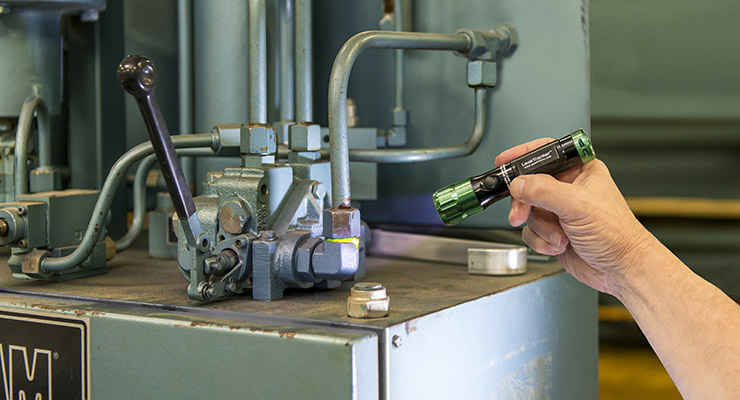
Any form of fluid leak strips you of revenue and contaminates the machine’s surroundings. If you’re lucky, the leak creates an unsightly mess at best and an environmental disaster at worst. The leakage rate plays a part in the severity of your problem, of course, since slow leaks are easy to manage. At the same time, a hose break spewing gallons per minute can be catastrophic.
The small leaks are the most common and can be the most annoying. Machines are often covered in a general sheen of oil-impregnated dirt, making it difficult to pinpoint the leak source. When the entire machine is dirty or oily, the leak is impossible to locate.
Leak detection kits have been around for a while now. Still, they are underutilized in their capacity to discover (and subsequently repair) leaks. This FAQ will help you with leak detection basics, especially if you are new to the concept. Please note, this FAQ applies to external leakage and not internal leakage, intentional or otherwise.
Q: Where do external leaks occur most often?
A: External leaks occur at any location, interfacing two or more components. Leaks occur at connectors and adaptors, at shaft seals on pumps and cylinders, at valve interfaces, through worn plumbing, through end seals in cylinders, at loose spin-on filters and cracked or rusted reservoir ports.
Q: Does hunting down a leak cost more than just replacement hydraulic fluid?
A: This is rarely the case. Hydraulic oil is costly, especially environmentally friendly bio-oils or high-performance synthetics. Leak detection most often takes only the resource of time, but when your hydraulic fluid costs over a hundred dollars per gallon, even small leaks are a drain on your pocketbook. It’s always a good idea to find and eliminate leaks.
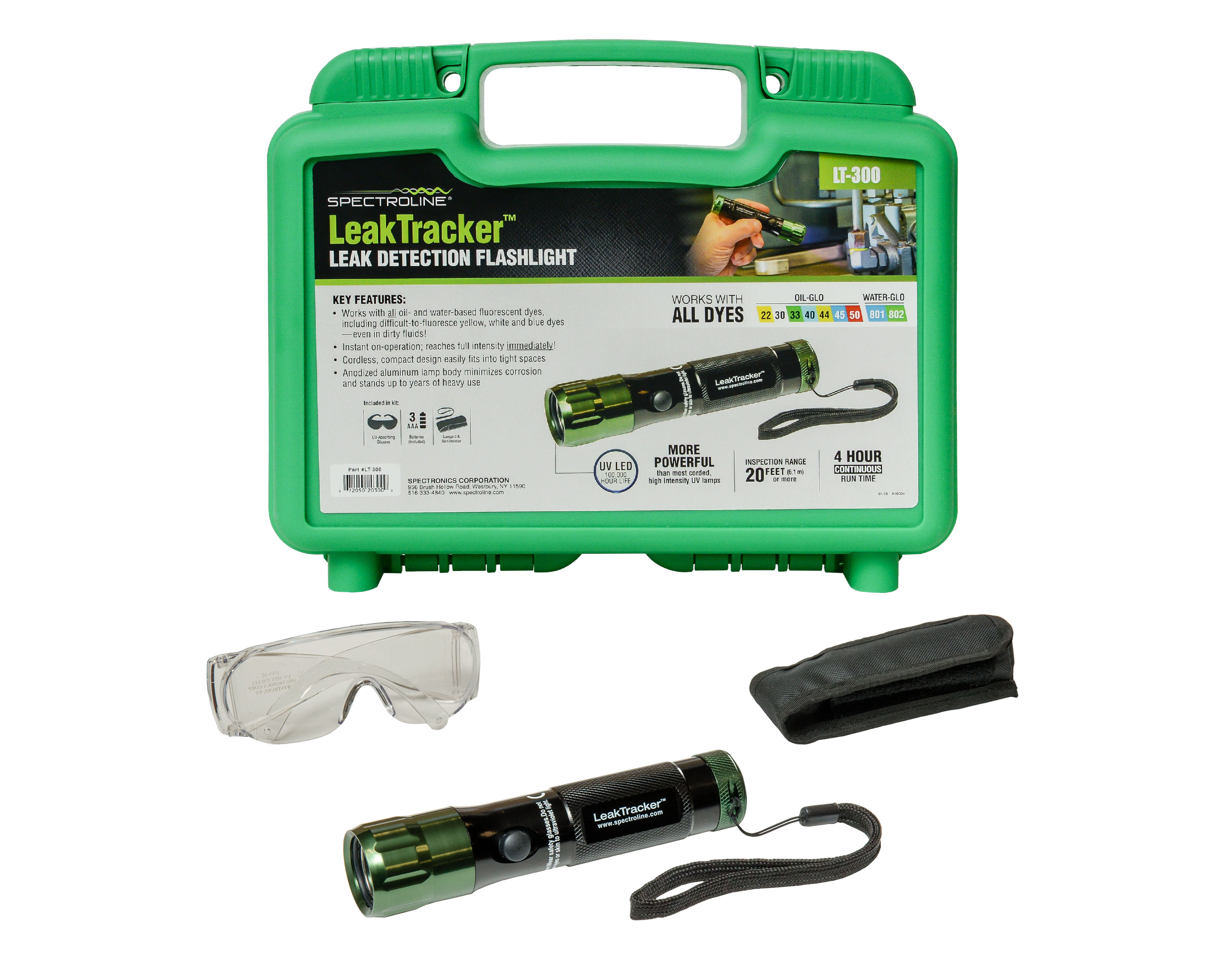
Q: Do leak detection kits actually work?
A: Yes, they absolutely do. Modern leak detection kits use a fluorescent dye, which will emit a green or purple glow when exposed to black light, highlighting the location of the leak.
Q: How are fluorescent dye kits used?
A: Fluorescent dye leak detecting kits require the fluorescent fluid dye to be added to your hydraulic reservoir and then run through the machine under regular operation. Depending on your hydraulic fluid’s darkness, you will need 1 oz (30mL) for every 4-8 gallons of hydraulic oil. The time it takes to saturate the hydraulic system depends on the fluid volume, pump flow rate and the number of actuators but can take anywhere from five minutes to an hour.
Once the dye is entirely circulated, shine the UV flashlight that comes with the kit at the suspected leak locations. If the leakage glows under the UV light, you’ve found your leak.
Q: Will fluorescent dye contaminate my hydraulic fluid?
A: No, the fluorescent dye was manufactured to work in harmony with nearly all industrial fluids, including all traditional and synthetic hydraulic oils.


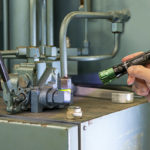
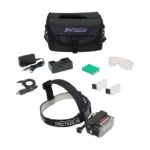
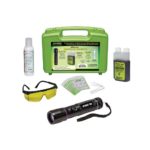

Leave a Reply